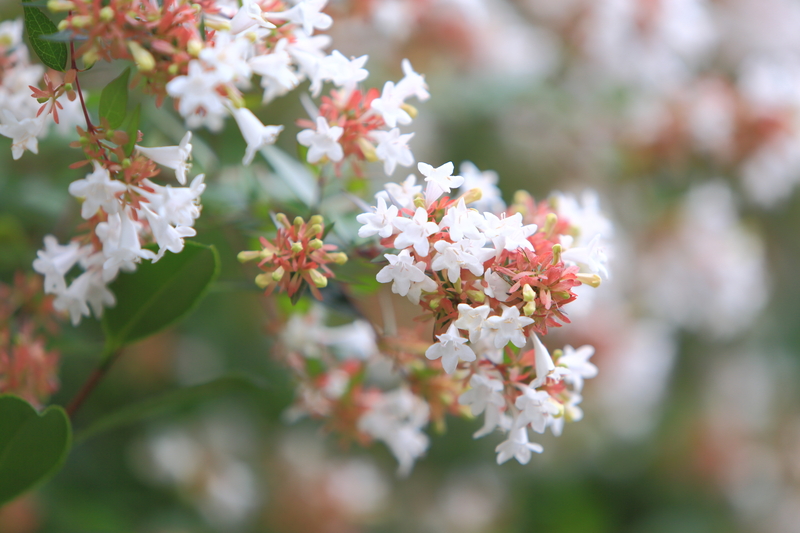Shield Your Garden from Harsh Weather Conditions
Posted on 21/09/2025
Shield Your Garden from Harsh Weather Conditions: The Ultimate Guide
Gardeners invest substantial time, care, and resources into creating lush, vibrant outdoor spaces. But even the most meticulously planned garden can suffer under harsh weather conditions. Whether it's searing summer heat, torrential rains, frost, or high winds, your precious plants are at the mercy of the elements. Fortunately, with thoughtful planning and the right protective strategies, it's possible to shield your garden and ensure it thrives all year round.
Understanding the Impact of Harsh Weather on Your Garden
Before you can protect your garden from extreme weather, it's essential to know what you're up against. Different environmental challenges threaten plants in unique ways. Let's take a closer look:
- Frost and snow: Can damage tender plants, stunt growth, and cause breakage of branches.
- Drought and heatwaves: Lead to wilted plants, sunburned leaves, and even plant death due to lack of moisture.
- Heavy rainfall and flooding: Cause root rot, soil erosion, and nutrient leaching.
- High winds: Break stems and branches, uproot shallow-rooted plants, and strip leaves.
- Hail storms: Physically damage foliage, flowers, and fruit.
To guard your garden against weather extremes, you'll need a multi-pronged approach combining both prevention and damage control.

Planning Your Garden for Maximum Weather Resilience
Choose Hardy and Native Plants
Native plants are naturally adapted to your region's climate. Selecting disease and weather-resistant varieties increases survival rates during harsh weather events. Here's why:
- Hardy plants better withstand drought, cold, and wind.
- Native species acclimate to local weather patterns and require less intervention.
Design with Microclimates in Mind
Every garden contains unique microclimates -- spots that receive more shade, warmth, or wind due to structures, trees, or terrain. Strategically locate vulnerable plants in protected areas to minimize weather stress.
- Place sensitive plants near walls, fences, or hedges for shelter from wind and cold.
- Use large rocks or garden structures to absorb and radiate heat during the night, protecting against frost.
How to Shield Your Garden from Heat and Drought
Mulching: Your First Line of Defense
Mulching is a game-changer for gardens facing heatwaves and dry spells. Not only does mulch act as a protective blanket for your soil, but it also:
- Retains moisture by reducing evaporation.
- Regulates soil temperature during extreme heat.
- Suppresses weeds that compete for water.
Apply a 2-4 inch layer of organic mulch, such as bark, straw, or compost, around your plants -- but leave a little space around stems to prevent rot.
Efficient Irrigation Strategies
Smart watering techniques can make a world of difference in protecting your garden during drought:
- Water early in the morning to minimize evaporation and fungal risks.
- Use drip irrigation or soaker hoses for targeted and efficient watering.
- Group plants with similar watering needs, so no area receives too much or too little moisture.
Create Shade for Sensitive Plants
If your garden is exposed to intense sunlight, temporary or permanent shading can prevent sun scald and moisture loss:
- Install shade cloths or garden umbrellas over delicate beds.
- Use tall plants or trellises to provide natural protection from scorching midday sun.
Defending Your Garden Against Frost and Cold Weather
Insulate Plants with Row Covers and Cloches
Row covers, frost blankets, and garden cloches are effective barriers against cold temperatures:
- Cover plants at night or during cold snaps to trap heat and prevent frost damage.
- Use lightweight fabric so plants can breathe and sunlight can penetrate.
- Glass or plastic cloches serve as mini-greenhouses for individual tender plants.
Mulching for Winter Warmth
While mulch is great for summer heat, it's just as critical in winter. Provide an extra-thick layer around perennials and root crops to insulate them from freezing temperatures.
Cold Frames and Greenhouses
If you're serious about garden protection, consider installing a cold frame or greenhouse. These structures allow you to cultivate plants year-round, shielded from the elements.
- Cold frames are simple boxes with transparent lids that extend growing seasons.
- Greenhouses support a wider variety of plants and protect against all weather extremes.
Protecting Against Heavy Rain and Flooding
Improve Drainage
Poor drainage causes root rot and nutrient loss. To safeguard your garden from excess water:
- Build raised beds to keep plant roots above soggy soil.
- Incorporate sand or organic matter to improve soil drainage.
- Install French drains or swales to direct water away from garden beds.
Avoid Soil Compaction
Walking on wet soil compacts it, further inhibiting drainage and oxygen flow to roots. Create designated walkways and use stepping stones to protect your garden's structure.
Windproofing Your Garden
Create Windbreaks
Reducing wind-impact is vital for shielding young and fragile plants from stem breakage and dehydration:
- Plant living windbreaks such as hedges, shrubs, or trees along prevailing wind directions.
- Use temporary wind barriers like garden netting or burlap screens.
- Install trellises or solid fences to block gusts without creating unnatural turbulence.
Stake and Support Plants
Prevent snapped stems and uprooted seedlings by providing sturdy support:
- Stake tall flowers and vegetables.
- Secure climbers to trellises with gentle ties.
- Regularly check and adjust supports as plants grow.
Saving Your Garden from Hailstorms
Hail can wreak havoc by shredding leaves and crushing tender shoots. Here's how to shield your garden from hail damage:
- Install hail netting, mesh, or old bedsheets over vulnerable plants during storms.
- Keep cloches, buckets, or heavy-duty containers on hand to cover prized plants in an emergency.
- Choose hail-resistant plants with tough leaves in prone areas.
Long-Term Strategies to Shield Your Outdoor Sanctuary
Soil Health: The Root of Resilience
Robust, healthy soil helps plants resist stress and recover from weather extremes. Build soil fertility and structure by:
- Adding compost and organic matter regularly.
- Encouraging beneficial soil microbes by avoiding unnecessary pesticides.
- Practicing crop rotation and cover cropping to prevent disease buildup.
Plan for Water Conservation and Catchment
A sustainable water management system helps both in droughts and in deluges:
- Install rain barrels to collect and reuse water.
- Design terraces or swales on slopes to help water soak in rather than run off.
- Use drip irrigation to maximize efficiency.
Employ Smart Garden Maintenance
Regular garden care goes a long way in weather-proofing your garden:
- Prune dead or weak branches to reduce wind load.
- Remove diseased or stressed plants promptly to limit the spread of problems.
- Stay informed about local forecasts to prepare in advance for extreme events.
What to Do After Severe Weather Hits Your Garden
Despite best efforts, extreme weather can sometimes take a toll. Here's how to help your garden recover from weather damage:
- Remove broken branches and clear debris gently to avoid further harm.
- Assess and re-stake any leaning or uprooted plants.
- Prune damaged leaves and stems to promote healthy regrowth.
- Supplement soil nutrients to help plants recover from stress.
- Monitor for pests and diseases that often follow weather events, as weakened plants are more vulnerable.

Frequently Asked Questions: Weather-Proofing Your Garden
Can I protect my garden from all types of extreme weather?
While it's impossible to make any garden completely weather-proof, using a combination of strategies -- such as mulching, using covers, windbreaks, and choosing hardy plants -- will greatly reduce the risk of severe damage. Regular maintenance and monitoring are key.
Are some garden plants more weather-resistant than others?
Yes. Native and locally adapted plants are generally more resilient. Research what grows best in your area, and select proven varieties for your specific climate and soil type.
What should I do with potted and container plants during extreme weather?
Potted plants are more vulnerable to both drought and frost. Move them to sheltered locations, such as under eaves or inside garages, during the worst of the weather. Cluster containers together for extra protection and cover with frost cloth when necessary.
Conclusion: Creating a Weather-Resilient Garden Sanctuary
Harsh weather is an inevitable challenge for every gardener, but it doesn't have to spell disaster for your outdoor haven. By embracing smart design, proactive protection, and resilient plant choices, you can shield your garden from harsh weather conditions and enjoy lush growth in every season. Remember: the best defense is a combination of preparation, observation, and a willingness to adapt. Start implementing these robust strategies today, and watch your garden flourish -- come sun, rain, wind, or snow!

